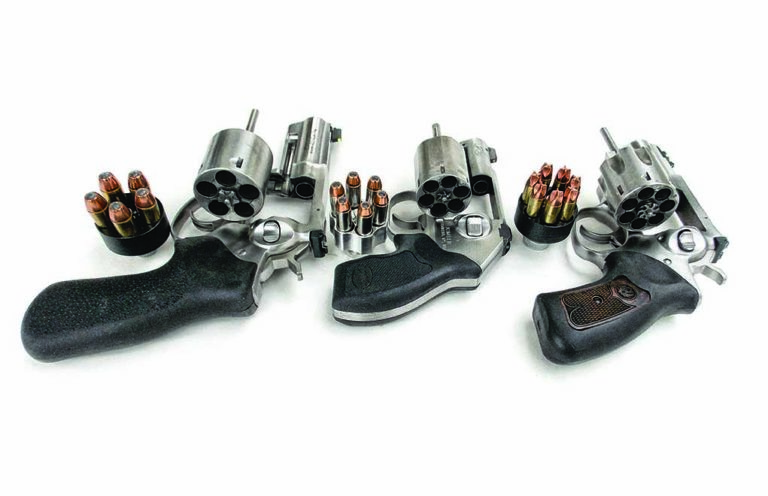
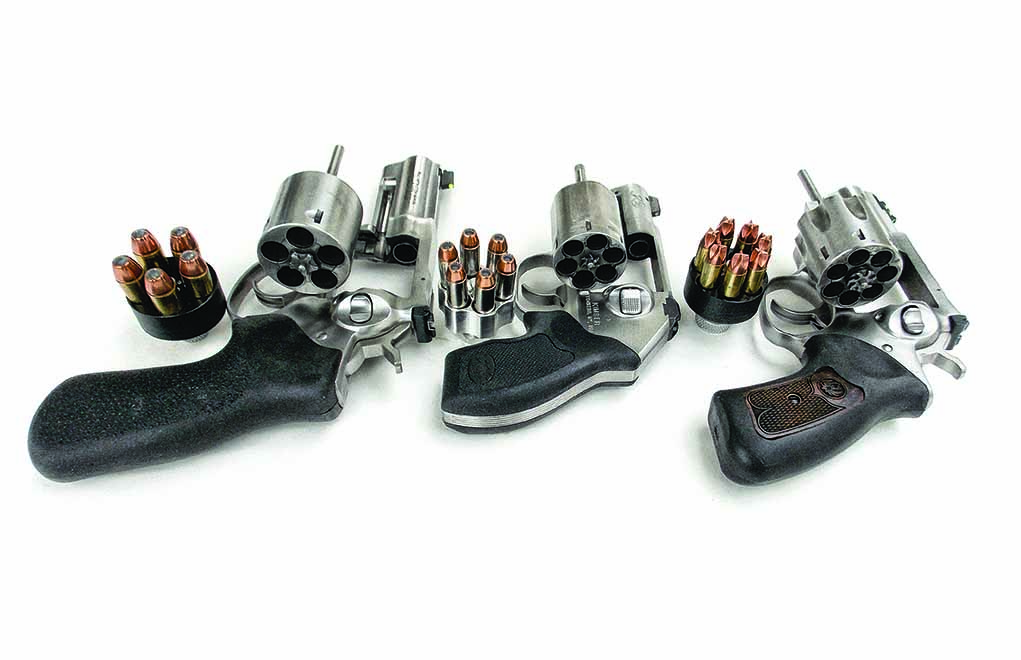
No, you didn't hear wrong, there is such a thing as a tactical revolver. And it might just be your best bet for EDC and home defense.
What Are Top Tactical Revolver Options:
- Ruger Redhawk .357 Magnum
- Ruger GP100 .44 Special & .357
- Kimber K6s .357 Magnum
- Smith & Wesson Model 69 .44 Magnum
The term, “tactical,” is defined as “gaining an advantage over an adversary or situation.” The revolver is a tactical tool with many advantages. A firearm that’s remained viable for so many years and has saved so many lives is worth your consideration as an EDC piece. Revolvers are far from outdated for personal defense and, in some situations, might be a better fit for you than a pistol.
If you choose a tactical revolver for personal defense, there are many good choices. As with any handgun, the weight or heft of the piece, its balance and the level of recoil you’re willing to master are important considerations.
Reliability is the baseline for performance. Only after reliability is confirmed are other features considered. The greater maintenance demands and complication of semi-automatic handguns might be daunting to the occasional shooter. However, the revolver is simple: Load, holster, draw, fire.
Ruger Adds More Power, More Rounds
Among the most interesting recent introductions is the Ruger Redhawk .357 Magnum. The Redhawk is proven and has long chambered the powerful .44 Magnum and .454 Casull cartridges. Chambering the Redhawk in .357 Magnum results in a revolver that’s massively overbuilt compared to lightweight revolvers that take a beating from the .357 Magnum cartridge. The .357 Mag. Redhawk is a large handgun (more than 45 ounces), even with its 2.75-inch barrel. In this configuration, the Redhawk is exceptionally well-balanced tactical revolver, and its weight helps absorb the recoil of the powerful .357 Magnum cartridge.
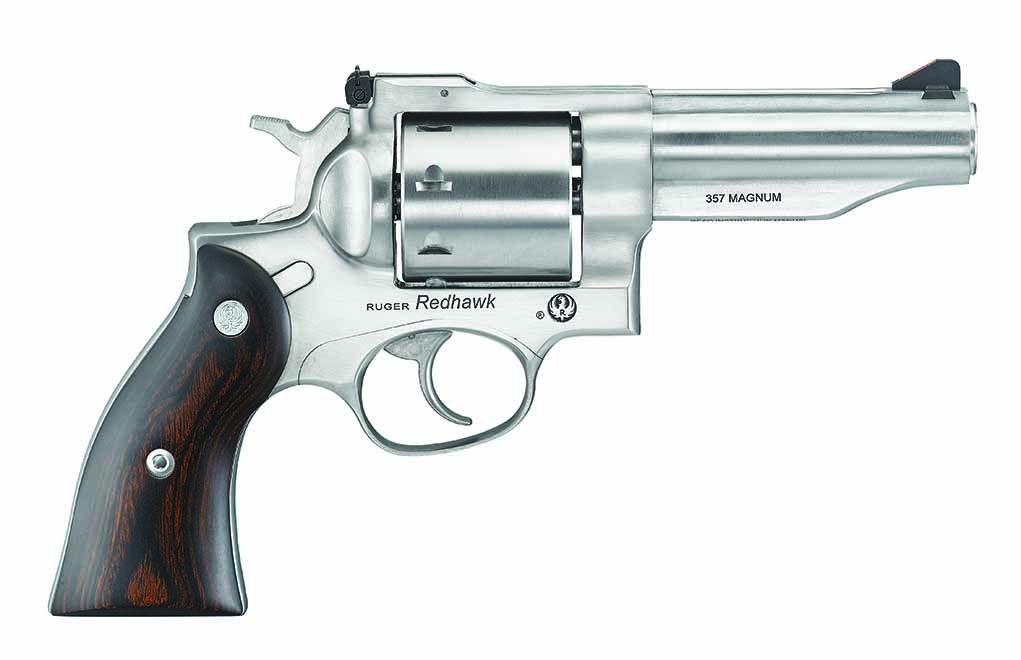
The Redhawk is on the large side for carry under covering garments but is well-suited for home defense. No handgun is too large to fight with. Subjectively speaking, recoil is light—no more than firing a .38 Special cartridge in a small-framed revolver. The Redhawk .357 Magnum can be fired with affordable, low-recoil .38 Special loads or powerful magnum ammunition.
Ruger introduced two new revolvers based on the GP100 frame. The first is a .44 Special version. This revolver features a non-fluted, five-round cylinder. The lockwork is adapted to manage the five rounds. The feel of the action is different than the six-shot revolver and perhaps a bit longer and smoother. The .44 Special features a 3-inch barrel; its front sight is a fiber-optic unit; and the rear is Ruger’s standard, fully adjustable sight. All this adds up to make the .44 Special GP100 an excellent personal-defense handgun.

While the .357 Magnum enjoys an excellent reputation against motivated adversaries, some prefer the surety of a big-bore cartridge. The .44 Special offers that advantage, and the Ruger GP100 is an excellent vehicle for it.
The Ruger GP100 .44 Special dropped one round in capacity in return for a big-bore cartridge, but Ruger was also working on increasing the capacity of the Ruger GP100 .357 Magnum. The result is the GP100 7-shooter. It feels and handles like a smaller revolver. While it’s only slightly smaller than the 3-inch-barreled .44 Special version, the overall impression is of a smaller handgun. I’ve fired the GP100 7-shooter extensively and adopted it as one of my most important personal-defense handguns.
Take A Spin With More Revolver Content:
- Civil War’s Unique LeMat Revolver
- 5 9mm Revolver Options Sized Right For Everyday Carry
- Smith & Wesson’s Most Famous Top-Break: The Schofield Revolver
- Double-Action vs. Single-Action Revolvers: Which One is Right for You?
- Best Revolver Reviews To Help Pick The Right Wheelgun
- Shooting the Snubnose Revolver
- The Lost Art Of Shooting Cap-And-Ball Revolvers
- Nagant Revolver: Unique Relic From Behind The Iron Curtain
The versatility of this wheelgun is unequaled by semi-autos. For example, with mild .38 loads, the GP100 is a pleasant plinker. With .38 Special +P loads, anyone in the family can use it as a tactical revolver for home defense. When I deploy the piece concealed with .357 Magnum defense loads, I’ve got a handgun with proven wound ballistics. In my experience, the only revolver that’s consistently as accurate as the GP100 is the Colt Python (it’s only slightly so), and it takes a good hand to prove it. The GP100’s lockwork in the seven-shot version cycles more quickly than the six-shot variant. This is an estimable revolver and my favorite among the new introductions.
Kimber Ups the Game
A development that’s quickly gained a good reputation is the Kimber K6S .357 Magnum, a light wheelgun that gives those carrying a J-frame revolver an option to move up in both caliber and capacity. The K6S’s cylinder accepts six cartridges, yet this stainless, double-action-only revolver is only fractionally wider than the archetypical five-shot.
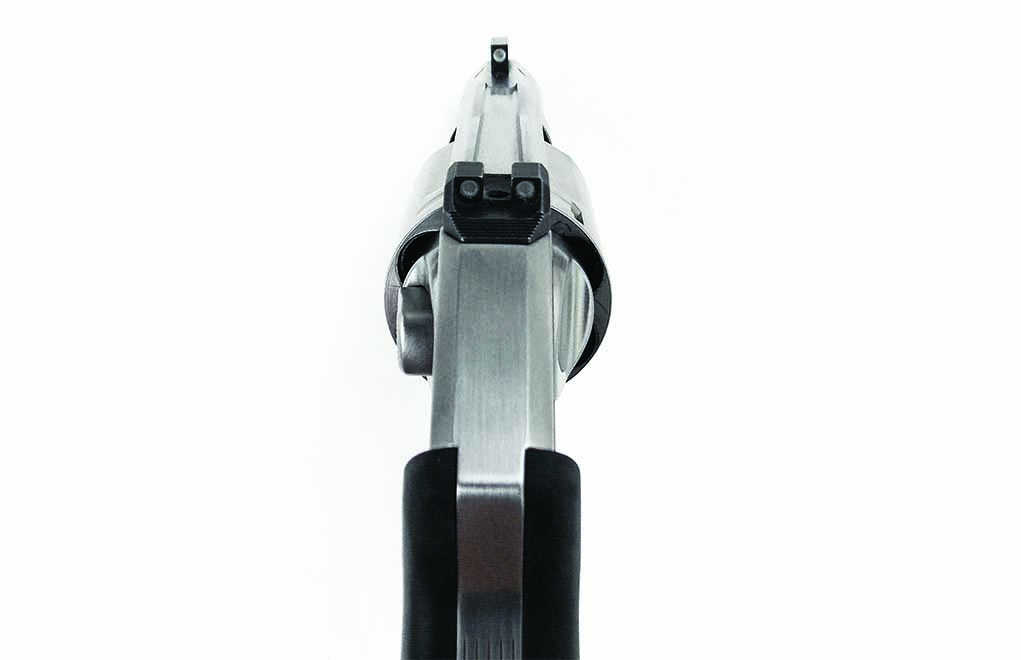
The internals are no surprise: The revolver is based on proven lockwork. Kimber took the J-frame action, moved the hammer spring about 5 degrees and changed the hammer’s pivot. The result is a shorter throw than other revolvers, along with a smoother feel. This action allows accurate work well past what is assumed to be snub-nose ranges. While the Kimber has a short sight radius, its excellent trigger action and modern sights make for a superior shooter.
New Smith & Wessons for the Tactician
A few years ago, Smith & Wesson introduced the Model 69 .44 Magnum revolver. Its L frame has been offered in a seven-shot .357 Magnum version for some time. In turn, S&W recently introduced an even lighter version of the Model 69: the Combat Magnum Model 69 in .44 Magnum, which features a 2.75-inch barrel and round butt grip (all S&W revolvers in modern production feature a round butt frame, but the grips are offered in either round or square butt configuration).
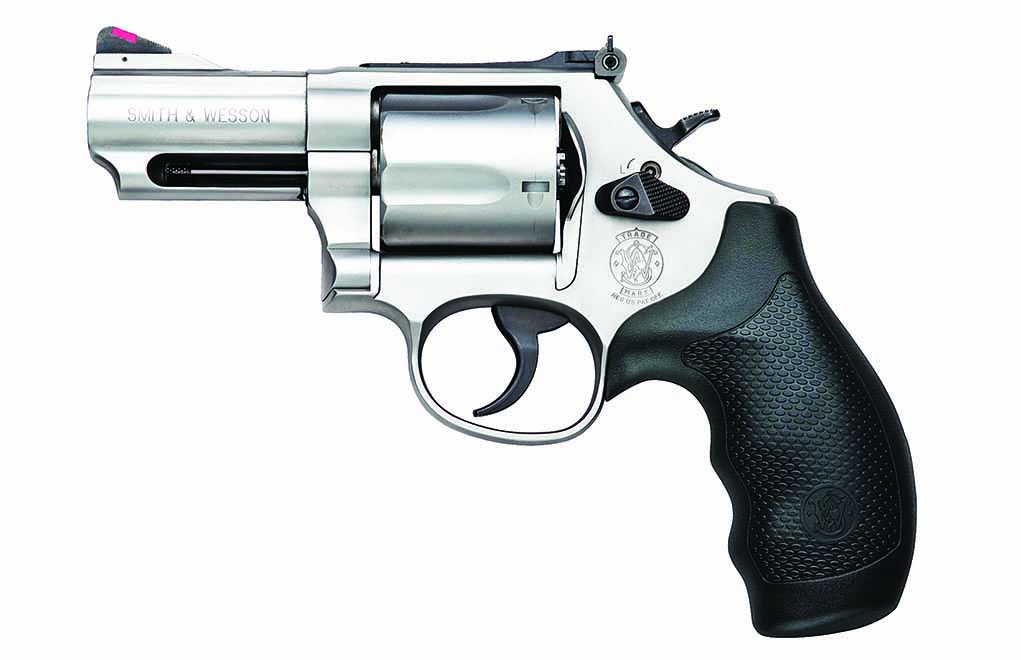
This tactical revolver is more suited to concealed carry than the 4-inch version. With an excellent set of sights and the smooth S&W action, it has much to recommend it. I think most of us will carry it with .44 Special ammunition; but there are .44 Magnum loads that aren’t full power that can be controlled in the Model 69. While I’m a fan of classic S&W revolvers, the newer guns are more durable and more accurate. The frames are strengthened in critical places, and the steel is stronger than ever. Modern CNC machinery ensures the throat and barrel dimensions are a good match and provide excellent practical accuracy.
Revolver Ammo Evolution
There’ve been interesting developments in self-defense ammunition, much of it directed toward revolvers. Among the most interesting is the Black Hills Honey Badger, whose advantage is an all-copper bullet with sharp cutting flutes. This projectile doesn’t depend on expansion for wound potential. The bullet rips and tears tissue immediately—not after the bullet has begun to expand—and cuts tissue.

When it comes to short-barreled revolvers that might not generate enough velocity for reliable hollow-point expansion, the Honey Badger makes a lot of sense. For an all-around defense load, it’s a viable alternative (the 100-grain .38 Special has proven accurate in the new Kimber). The newest addition to the Honey Badger line is a .44 Magnum version. I’ve fired this loading in the S&W Model 69 and found it accurate, clean-burning and not too difficult to control in double-action pairs.
Hornady offers its Critical Defense in popular revolver calibers, including .32 Magnum, .38 Special, .357 Magnum, .44 Special and .45 Colt. I’ve had the most experience with the .38, .357 and .44 loads. The .357 Magnum is sensibly downloaded from the 1,450 fps, 125-grain standard. At 1,380 fps from a 4-inch-barreled and 1,220 fps from the 2.75-inch-barreled GP100, this load offers excellent expansion and wound potential. The .44 Special and .45 Colt loads breathe new life into older cartridges.
One of the most interesting additions is sure to be a popular choice for snub-nose .38 Special revolvers: Federal’s .38 Special 130-grain Hydra-Shok loading. This bullet is loaded deep into the case to maintain a clean powder burn and limit muzzle flash. The Hydra-Shok features modest recoil, good accuracy and excellent expansion. It’s an outstanding loading for light revolvers.
Packing A Tactical Revolver
Among the most important choices you’ll make is how you’ll carry your tactical revolver. There are holsters that are too soft, inaccessible under clothing and that collapse after the handgun is drawn, making it impossible to holster the piece without loosening the belt. Revolver holsters differ considerably from semi-auto holsters in both design and balance. A revolver holster must keep the cylinder off the beltline. A high-riding holster will keep the revolver close to the body and angled into the draw for real speed. For retention, the holster should be tightly fitted to the revolver along the cylinder and barrel.
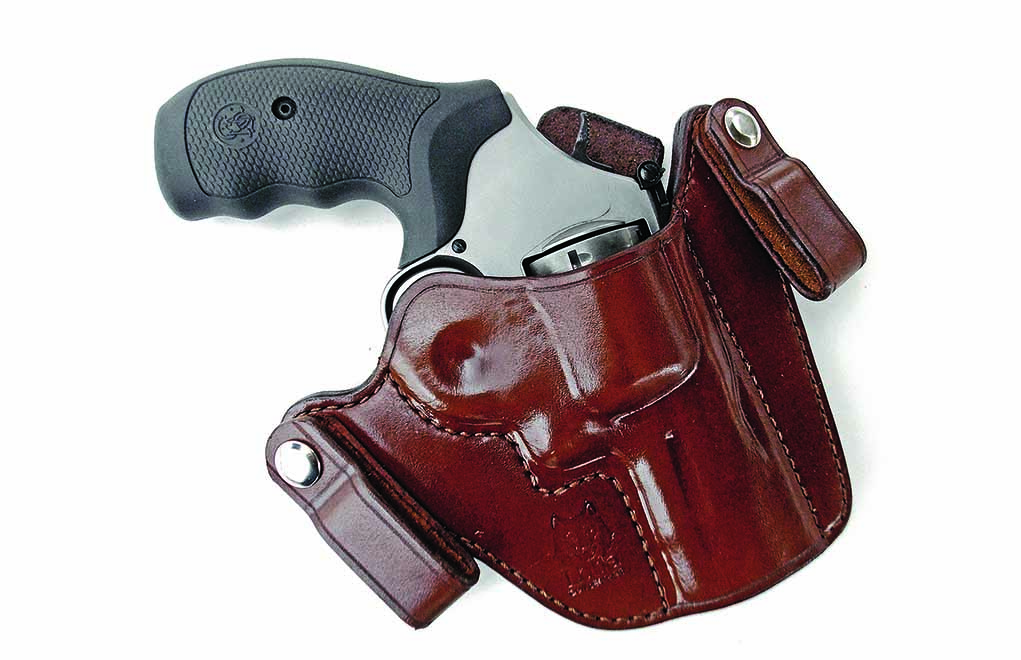
A strong-side holster should always be the first choice. If a covering garment is worn, the strong-side scabbard affords good access and speed. A good choice is the Nelson Holsters Avenger, which keeps the handgun cinched in close to the body by use of a proven belt loop design. The butt is angled into the draw, and a strong holstering welt is designed to allow ease of holstering.
The DM Bullard Combat is a well-designed strong-side holster. Its supple construction keeps the handgun comfortably against the body and is well-suited to heavy, short-barreled handguns such as the Ruger GP100 .44 Special.
Another good choice is the cross-draw. Cross-draw holsters offer access while you’re seated or driving and afford real speed for those who understand how to properly execute the draw. Among the best cross-draw designs is the Galco Hornet. It’s stitched of quality steer hide and has excellent fit.
The default design for concealed carry is the IWB holster, which allows the use of a larger handgun: The main part of it is buried in the pants. Dual belt loops or a strong belt clip is needed. The holstering welt must allow holstering the handgun after it’s drawn—without removing the holster from the inside-the-pants position.
Lobo Gunleather offers IWB designs ideal for revolvers. I especially like Lobo’s rear-clip IWB, which keeps the handgun tight against the body and offers a sharp draw.
The Revo Rig, a new design from Urban Carry, is among the most interesting to come along in decades. This holster system comprises a backing that allows the attachment of different holsters. The same backing can be used for a number of handgun shells. The Revo is available for popular revolvers, including one of my favorites—the S&W Model 442 .38 Special. The backing features dual snaps that lock into the back of the holster, which, itself, is secured by hook-and-loop fasteners. It can be adjusted for forward or backward cant.
Revolvers are more advanced and more suited for everyday carry than ever. With proper training and modern accessories, the tactical revolver is not only a viable choice; it’s the right choice for many.
Editor's Note: This article is an excerpt from Tactical Gun Digest.

Next Step: Get your FREE Printable Target Pack
Enhance your shooting precision with our 62 MOA Targets, perfect for rifles and handguns. Crafted in collaboration with Storm Tactical for accuracy and versatility.
Subscribe to the Gun Digest email newsletter and get your downloadable target pack sent straight to your inbox. Stay updated with the latest firearms info in the industry.

![Best Concealed Carry Guns In 2025 [Field Tested] Wilson Combat EDC X9S 1](https://gundigest.com/wp-content/uploads/Wilson-Combat-EDC-X9S-1-324x160.jpg)


![Best 9mm Carbine: Affordable PCCs [Tested] Ruger Carbine Shooting](https://gundigest.com/wp-content/uploads/Ruger-Carbine-Shooting-100x70.jpg)
![Best AR-15: Top Options Available Today [Field Tested] Harrington and Richardson PSA XM177E2 feature](https://gundigest.com/wp-content/uploads/Harrington-and-Richardson-PSA-XM177E2-feature-100x70.jpg)

I’m looking to trade my Ruger Blackhawk 357 with the 6 1/2 inch barrel for something smaller in the barrel but in the 357 class
My tactical revolver is a S&W Model 69 .44 combat magnum with a 2.75″ barrel. It sports a Burris 2x scope as long as the revolver, Hogue laser sight monogrips and a lanyard ring. The lanyard attaches to my belt holster. Tactical home backup and EDC is a Charter Arms Bulldog .44 special with Crimson Trace laser grips. I am working on a tactical shield made of AR500 steel to use as mobile cover in a home defense situation so a tactical revolver, or 2, makes sense to me.
“Dear GD,” Why do you even bother reviewing a Kimber? Ever since they refused to stand by a large number of their semi-auto pistols, they have literally shot their reputation to “h e double hockey sticks.” Only 2 people I know own a Kimber product, and both have had nothing but problems; one actually shaves metal off the frame every time the slide functions.
With the high cost of a Kimber, and the fact they won’t stand by their produce, do you think I would EVER waste my hard-earned money on one? — I would rather buy a Taurus or a High Point any day than a Kimber.
Fully loaded 5-shot S&W AirLite PD .357mag complete with Crimson Trace red laser grips weighs in at 15 ounces and who needs a holster when it slips so nicely in your front pocket. It’s a bitch to shoot the .357’s but in an emergency you might not even notice and you can always go with the more pleasant +P’s.